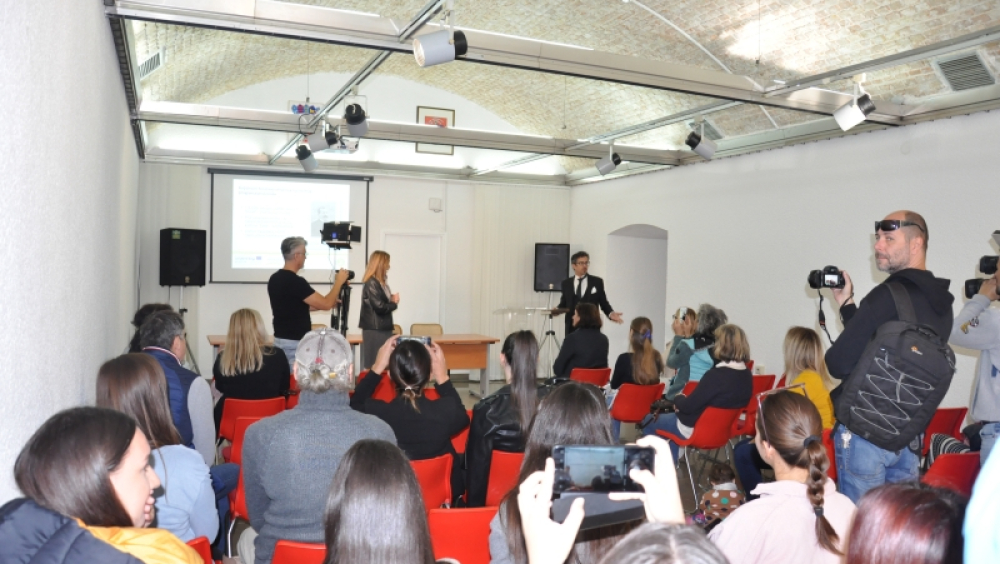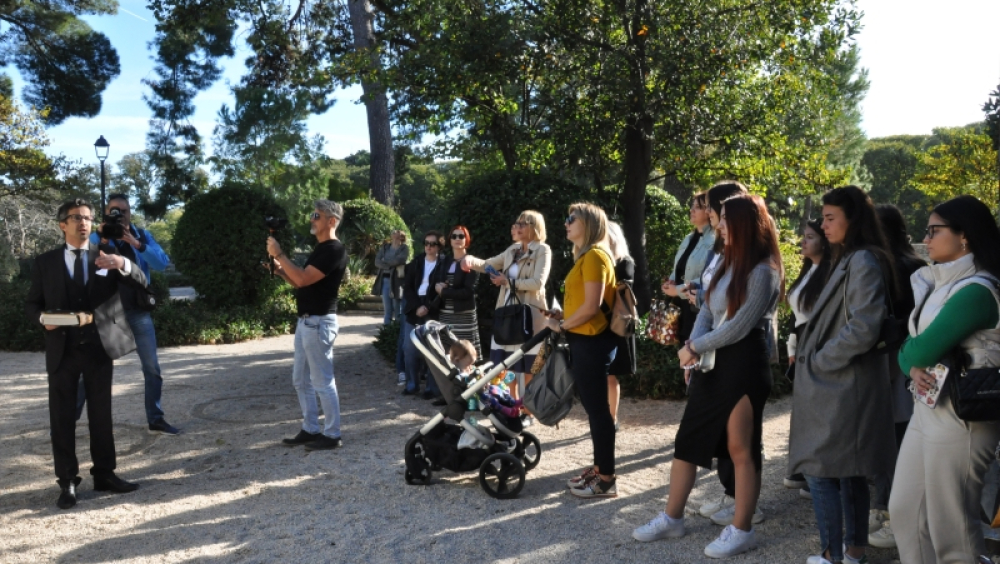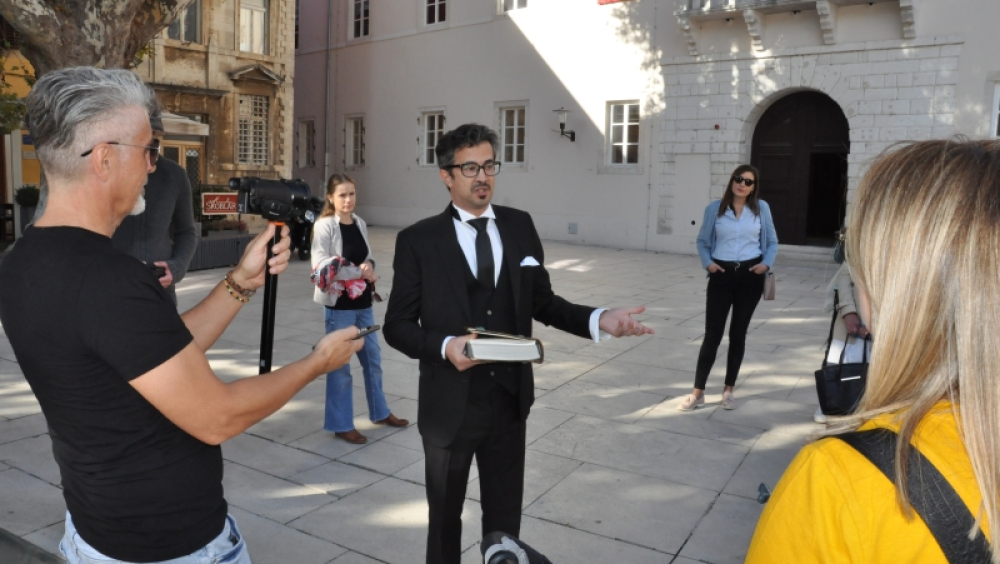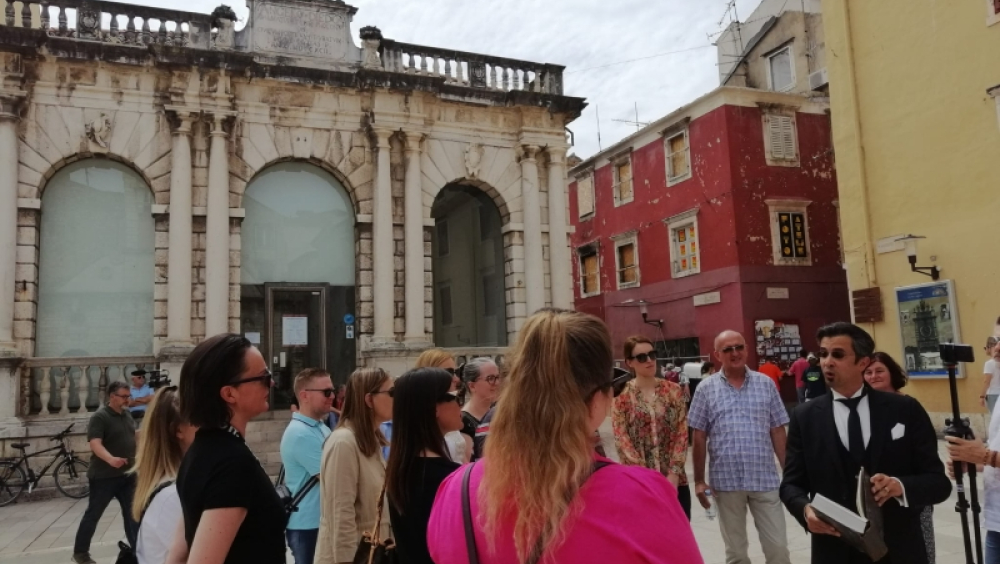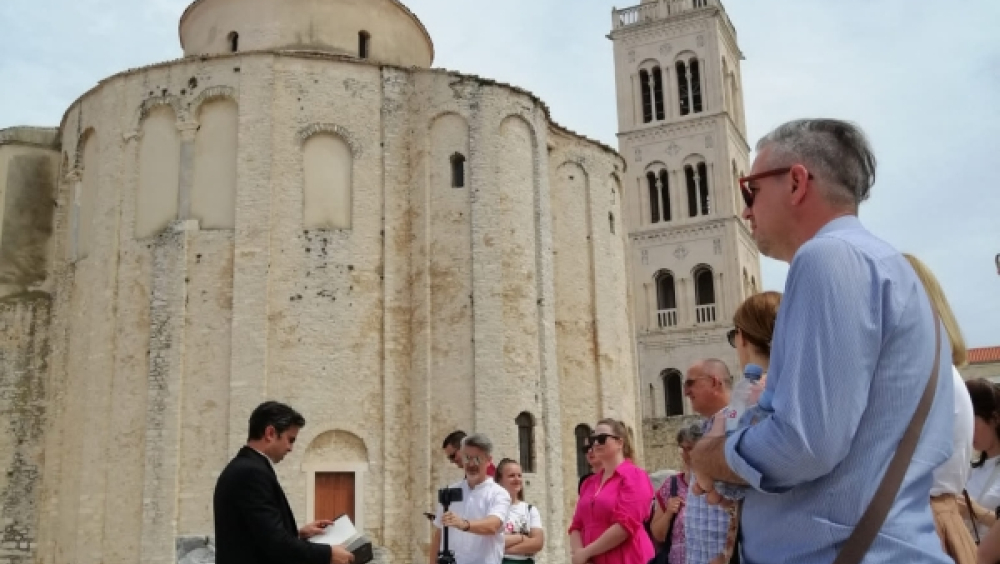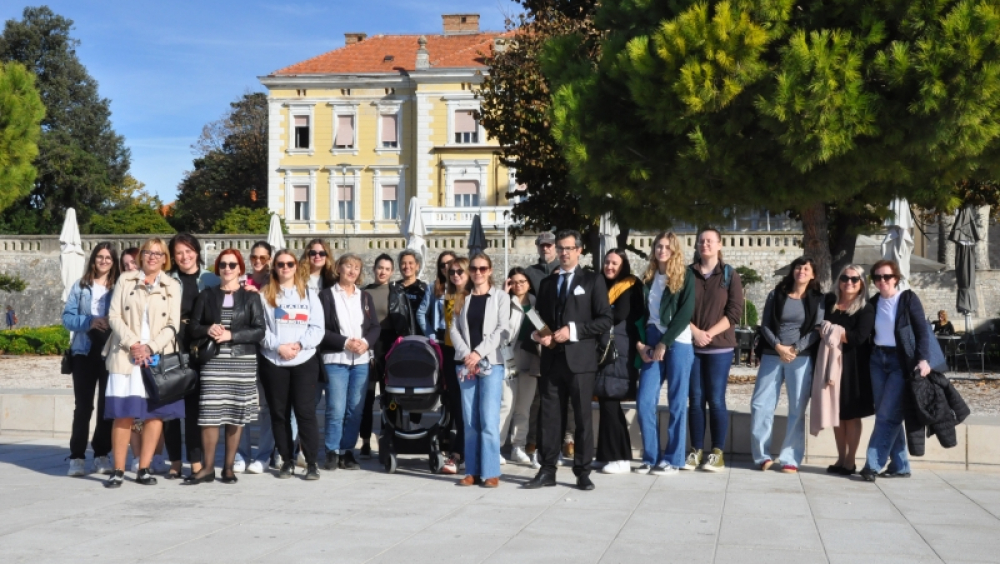Zadar – Belle Époque Storytelling Tour
It was the year 1910, doctor of law Vladimir Pappafava, respected attorney in Zadar, left his office and headed toward Biblioteca Comunale Paravia (Communal Library Paravia) to return books. The Library meant a lot to him in support of his scientific work as the most translated Croatian legal writer. Several days ago he returned from Italy where he participated at the 1st International Congress on Air Law in Verona. While walking to the Library he was satisfied after presenting his research and native town to his European colleagues but also quite tired after long journey back. Suddenly he felt dizziness and then a strong wind threw him into the present day… He is confused and at the same time curious what changes took place in his beloved town. Join him in his adventure, explore present-day Zadar and compare it with Zadar from the 19th and beginning of the 20th century during the period of the Belle Époque. Discover if there are still famous theatres, publishers, and cafés, that made Zadar not only political but also the cultural centre of Dalmatia. And of course, tell us why Mr Pappafava is always peering into an old leather-bound book.
The Story “Zadar – Belle Époque tour” was inspired by the rich heritage and valuable collections of the Zadar Research Library (collection of old books, photographs, postcards, serials and Theatre Verdi’s Posters). The story was developed to raise awareness of the local population and visitors of the city of Zadar in regard to the value of books and other heritage kept on the shelves of the Research Library. Normally, the library is a place visited by students, researchers and citizens, but in this story, the library and its collections are "leaving” the building and helping the PhD Vladimir Pappafava in his visit to present-day Zadar and comparison with Zadar of his time – a period of Zadar’s Belle Époque. „Zadar – Belle Époque Storytelling Tour“ takes you back in the history from the 19th century to the First World War - the period when the city of Zadar takes off its „armour" (city walls) and from the warrior becomes "Bon vivant” – a lover of easy life, comfort, and pleasure. At that time, Zadar was not only the administrative capital of the Austrian province of Dalmatia, but it was also its cultural and cosmopolitan centre. The rich history of Zadar as a political and cultural centre of Dalmatia is evident also in the rich documentation and bibliographical heritage kept in the Zadar Research Library – collections of books, manuscripts, journals, parchments, photographs, maps, newspapers, etc. The main character of the story is Vladimir Pappafava, PhD. (1850– 1927), an attorney who donated his private library to the Biblioteca Comunale Paravia (present-day Zadar Research Library). That was the 2nd biggest donation to the Library. The story starts in the Research Library when PhD Pappafava interrupts the ongoing presentation of the institution and its collection. Pappafava came in the year 1910. He left his office and wanted to return books to Library Paravia (present-day Research library Zadar), but a strong wind threw him into the present day. He is confused and asks the librarian for help and an explanation. When he realises that he has somehow finished in the present-day Zadar he is curious to explore it and compare it with Zadar from the 19th and beginning of the 20th century. He invites all participants to join him. In his exploration of present-day Zadar, he borrows a book and uses it as a guide. This book is actually a presentation of part of the heritage kept in the Zadar Research Library related to this storytelling tour. Cultural sites of the storytelling tour: The Queen Jelena Madije Park The park named after Queen Jelena Madije, built on top of the bastion Ponton was the first public park in Croatia built by Austrian commander Baron Franz Ludwig von Welden in 1829. At that time park was a central meeting place where citizens could enjoy live music, coffee or just relax in the green oasis of the city. Rector's and Proveditor's Palace: a monumental complex of Rector's Palace and Proveditor's Palace in the 19th century was the seat of the Dalmatian government within the Austrian part of the Dual Monarchy Austria-Hungary. Drioli palace: Zadar in the 19th century was worldwide known as the City of Maraschino – the liqueur loved by kings, artists, and intellectuals. Francesco Drioli started its production on an industrial scale in 1759, and soon he became the official supplier of many royal families, including those of Austria, England, and Italy. Cedulin palace: The Cedulin Palace from the 13th century was reconstructed and transformed into a military and later civil hospital. Part of the hospital was a Maternity hospital where it is assumed that George von Trapp was born. The People's Square and the City Loggia: The People's Square is the centre of life and administrative centre of the City of Zadar already from the medieval period. City loggia (16th century) from 1855 served as the home of Paravia Library - the forerunner of today’s Research Library Kalelarga: The main street in the historical centre follows the same direction and connects the eastern end western part of the city, as roman Decumanus did. This street, which has been a symbol of the city from most ancient times, in the 19th century connected different cultural centres of the city – theatres, publishers, cafes, etc. Forum: Already from the Roman period, the Forum remained one of the main meeting places in Zadar. In the 19th century, the area of Forum was a fruit and vegetable market surrounded by bars and cafés. In the proximity of the Forum, the first Zadar permanent photographer Josip Brčić had his atelier, while in nearby churches music was taught to new generations of later well-known musicians. The Cathedral of St Anastasia: a monumental Romanesque basilica was a central place for the performance of sacred/church music, as well as for music education. Church of Our Lady of Health / Teatro Verdi: In the vicinity of Church Our Lady of Health Teatro Verdi was built and opened in 1865 with the performance of Giuseppe Verdi's opera A Masked Ball. This theatre was the centre of the city's cultural and artistic life, and it hosted operas, operettas, ballets, comedies, dramas, silent and sound films, dances, and balls. Some of the biggest acting and music stars performed in Zadar: silent film star and theatre actress Alda Borelli, actor Ferruccio Benini, the greatest theatre actress of her time Eleonora Duse called Divina, actor Alfredo de Sanctis, and many others. Church and Monastery of St Francis: the oldest Dalmatian church built in Gothic style. Franz von Suppé', an Austrian composer of light operas and other theatre music (19th century) premiered at a Franciscan church in 1835 Roman Catholic mass. Seafront / Riva, the end of the tour: following the order of the Emperor Franz Joseph, Zadar city walls on see side were demolished and Zadar opened towards the sea with its new seafront with luxurious palaces, cafes, parks…
The European dimension of “Zadar – Belle Époque Storytelling Tour” is manifested through the following aspects - Collaboration on multiple levels, A focus on cultural diversity, Active participation of visitors and the local population, stimulating the re-evaluation of today’s values, promotion of inclusion, networking and cooperation in cultural product development. All these dimensions are elaborated in a joint paragraph since they cannot be separated as they were present in all processes of development. The story is the result of a collaboration between the tourist guide (storyteller) and the Research Library Zadar (heritage guardians). The idea was to find a new way to present and raise awareness regarding the rich heritage kept in the Research Library. The steps in the transformation of the Library as the proactive creator of new cultural experiences included the identification of theme, target groups, links between the tangible heritage sites and Library collections, and promotional/management models. The Story is based on the collections of the Research Library Zadar: • Collection of old books http://dikaz.zkzd.hr/?pub=2&p=6&who=cat&navP=1&navS=20 • Collection of photographs: http://dikaz.zkzd.hr/?pub=2&p=60&who=cat&navP=1&navS=20 • Collection of postcards http://dikaz.zkzd.hr/?pub=2&p=5&who=cat&navP=1&navS=20 • Collection of Theatre Verdi’s Posters http://dikaz.zkzd.hr/?pub=2&p=71&who=cat&navP=1&navS=20 • Collection of serial publications http://dikaz.zkzd.hr/?pub=2&p=19&who=cat&navP=1&navS=20 The main character, Pappafava, a known European legal writer, presents Zadar as a multicultural centre in the 19th and beginning of the 20th century – a city with rich cultural production, strong cross-frontier cooperation in terms of education and culture, a place with active participation of women in the cultural life as well as in entrepreneurship. A place tailored to every woman and man, and for that, it was a Zadar – La Belle Époque. The story invokes you to reconsider today's values with those presented. The Story was created in the Croatian language and adapted for families, students, senior citizens, etc. The 2nd phase was planned to be adapted for English-speaking visitors, researchers, students etc.
